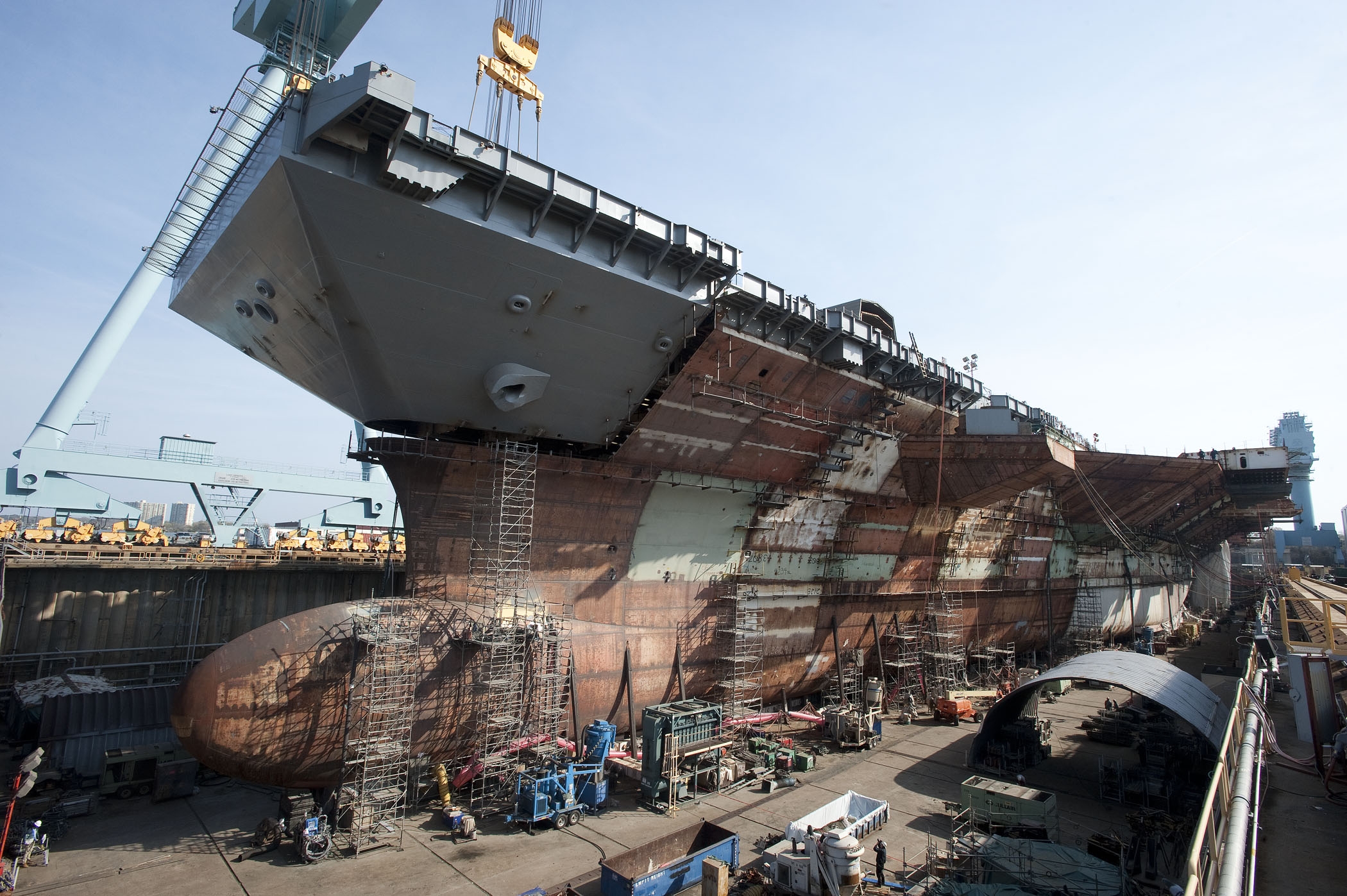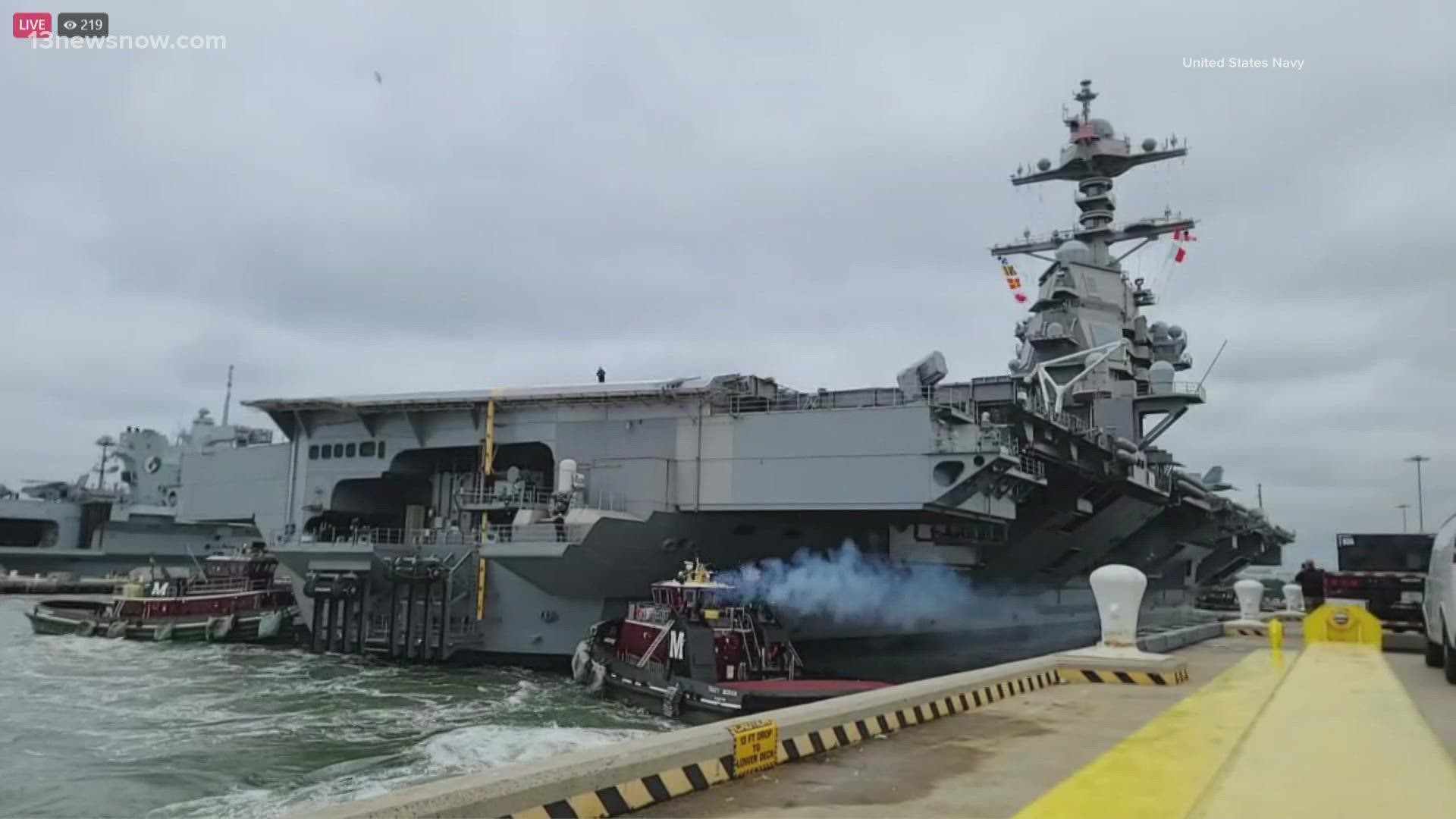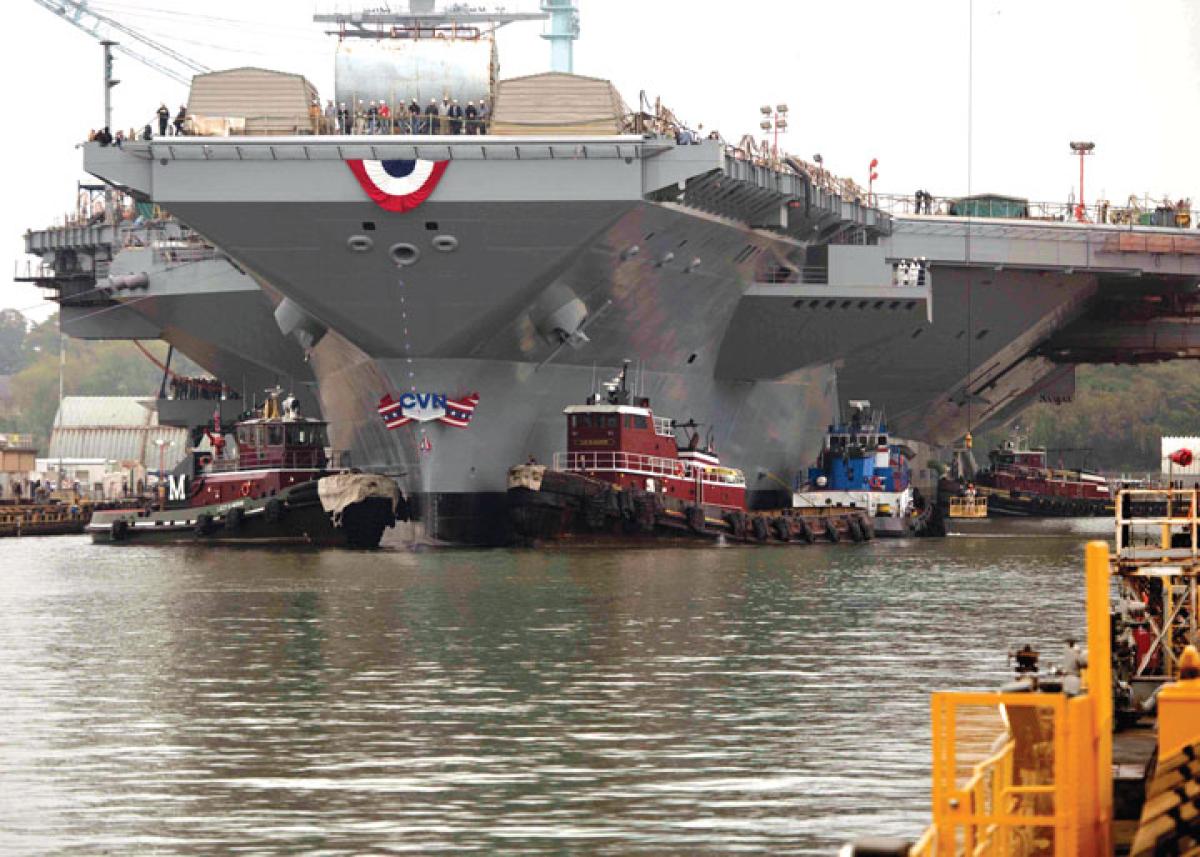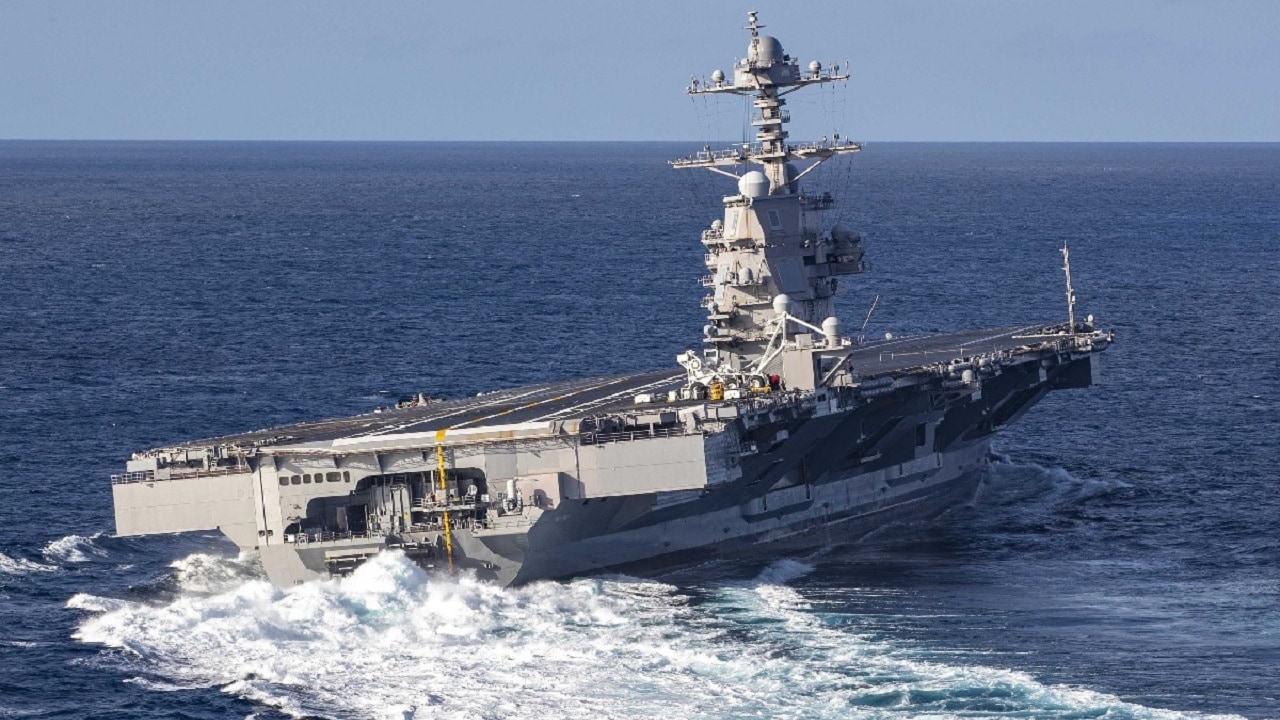Us 13 Billion Aircraft Carrier - "The renaming of these assets is not about rewriting history, but to remove the focus on the parts of our history that do not align with the tenets of this country, and instead allows us to highlight the events and people in history who may have
been overlooked," Del Toro added. "Robert Smalls is a man who deserves a namesake ship and with this renaming, his story will continue to be retold and highlighted." The combat system for the Navy's newest and costliest warship, the $13 billion Gerald R. Ford, "has yet to demonstrate that it can effectively" defend the aircraft carrier from anti-ship missiles and other threats, according to a new assessment by the Pentagon's
Us 13 Billion Aircraft Carrier

testing office. The nuclear-powered aircraft carrier USS Gerald R. Ford (CVN-78), the lead vessel of the U.S. Navy's latest class of carriers, and the most expensive warship in the U.S. history, just breached a USD$12.9 billion spending lid set by Congress by USD$120 million bringing the total acquisition cost to $13.027 billion, the Navy said in a recent statement.
The report, which contains unclassified and "controlled unclassified" information and has been circulated to the Navy, found that "only a limited assessment" of the combat system's effectiveness is possible at this point. It said Nickolas Guertin, the new head of the testing office, plans to send Congress an interim report on Ford's self-defense capabilities by Sept.
30. The ship previously made headlines when it sailed through the disputed Taiwan Strait alongside the USS Antietam in August 2022 amid sky-high tensions between the US and China over then-House Speaker Nancy Pelosi's visit to Taiwan a few weeks earlier.
He observes that the Rubis-class submarine is the world's smallest nuclear submarine (2,670 tons submerged) and that could make it more difficult to detect. According to this Chinese expert's analysis, the Los Angeles-class submarines protecting the aircraft carrier have about three times the displacement—placing them at a disadvantage, especially in a circumstance where both crews have a similar level of training proficiency.
This is not the first time that Chinese submarine experts have admired France's small displacement nuclear submarines, which they seem to think could be particularly well suited for the shallow waters of the Western Pacific. It is argued in this Chinese analysis, moreover, that the French submarine's comparatively slow maximum speed (25 knots) seems hardly to be a major deficiency.
The changing of the name of the missile cruiser USS Chancellorsville comes after a US government Naming Commission reviewed assets within the military that honored various aspects of the Confederacy and required them to be renamed.

Secretary of Defense Lloyd Austin agreed with the commission's recommendations in October 2022. Each branch of service has until 2024 to make any necessary name changes. The Battle of Chancellorsville, which the cruiser was initially named after, took place in Virginia in the spring of 1863 and proved to be a major victory for the Confederate army, despite the loss of Lt.
gen. Thomas 'Stonewall' Jackson. The USS Chancellorsville was commissioned in 1989 and is assigned to Carrier Strike Group Five in Japan, although it is scheduled to leave active service in 2026. America is the only country in the world that bases its naval strategy on its carrier fleet.
The Navy stands by the approach, despite its well-known vulnerabilities. Admiral Scott Swift, commander of the U.S. Pacific Fleet, said in an interview with Reuters last year that he would deploy aircraft carriers into close battle in a heartbeat, although he also admitted that the advancement of anti-ship weapons have made carriers less valuable than they were 15 years ago.
The missile that designates the target flies at a higher altitude, guiding the others skimming the sea surface to their eventual destination. A missile flying at a higher altitude is easier to shoot down, however, and the P-700 system was designed with this fact in mind.
So if the lead missile, flying high above the others, is knocked out of the sky, another one of the group immediately pops upwards to replace it. The new carrier features a host of new and untested technology, including the ship's two main turbine generators, a new dual-band radar system, advanced weapons elevators, and a new advanced arresting gear on the flight deck.
U.S. President Donald Trump objected to the installation of some of the new systems such as General Dynamics' new electromagnetic aircraft launch system (EMALS) aboard the USS Gerald R. Ford, as I reported in May [2017].
Take China, for example. The South China Sea is becoming a heavily contested body of water where Beijing's expansionism is threatening security in the region. As we've noted previously, Steve Bannon, Trump's top aide, has ranted on his Breitbart radio show about an eventual conflict between Washington and Beijing.

The additional USD$120 million will be needed to fix the aircraft carrier's faulty Advanced Weapons Elevator used to transport ammunition from the lower to the upper decks, as well as to repair the Ford's propulsion system bearing, which broke down during sea trials in January,
the U.S. Navy's Naval Sea Systems Command said in a statement quoted by Bloomberg News on May 11. (This was the second breakdown of the main thrust bearing of the ship's propulsion system—the first incident occurred in April 2017.)
It also said that during 8,157 takeoffs and recoveries through last year, the carrier's new electromagnetic catapult system made by General Atomics demonstrated a reliability of 272 launches "between operational mission failure," or "well below" its required 4,166.
Similarly, its system to snag landing aircraft demonstrated a 41-landing reliability rate "well below the requirement of 16,500," the testing office said. After a series of additional evaluations and exercises with the Ford's air wing, the plan is for the carrier to "visit multiple theaters of operation with multiple allies" by the end of summer, Rear Admiral James Downey, the Navy's program executive officer for aircraft
carriers, told reporters Friday. He said the Navy is confident in the vessel's combat systems. "She's been engaged against her required threats and we've done those tests at sea, they've been evaluated and she's achieved her certification in the combat systems area," Downey said.
The Project 636 was likely following the Reagan to protest Freedom of Navigation exercises taking place at the time to challenge Beijing's territorial claims in the South China Sea. As Foxtrot Alpha has reported, China has been asserting its power in the region by building artificial islands in the body of water that have violated other nations' maritime borders.
In any case, the move was a clear sign that Beijing does not fear the Navy's mighty carrier fleet. The Naval Sea Systems Command said in a statement that it "welcomed the opportunity to review and provide comment on" the assessment draft.

"Overall," it said, recent post-delivery testing of the Ford "indicate the risk of system reliability impacting mission accomplishment is decreasing." More than 8,100 launch and landing operations "highlighted the Ford's increasing capability and provide growing confidence that a fully trained Ford crew and embarked air wing will achieve the required sorties generation rate," the command said.
A small French nuclear sub, Saphir, snuck past several points of defense and sunk the U.S. carrier Theodore Roosevelt and half of its escort ships. News of the exercise results were not widely publicized but, as The National Interest notes, the Chinese were well aware of the Rubis-class submarine's success against the U.S.
carrier. The publication cited an interview in which Chinese Submarine Academy professor Chi Guocang was asked why the French sub was able to perform so well: The carrier built by Huntington Ingalls Industries Inc. is still dogged as well by the "poor or unknown reliability" of its aircraft launch and recovery systems, according to the five-page report.
And recent shock tests to assess the vulnerability of key systems "identified several design shortfalls not previously discovered," the testing office said. It said "the Navy has already identified several survivability" opportunities to improve the four-carrier class of ships "against underwater threat engagements."
"To be sure, the need to project power across the oceans will never go away," he said. "But, considering the massive over-match the U.S. already enjoy. Consider, too, the growing anti-ship capabilities of adversaries. Do we really need eleven carrier strike groups for another 30 years when no other country has more than one?
Any future plans must address these realities." Thing is, the USS Gerald Ford will go along as planned, despite its very real vulnerabilities. The carrier will undergo a battery of certification tests in the summer and is expected to be commissioned in the fall.
Trump will get one step closer to the 12 carriers that he wants. In October of 2015, a Project 636-class submarine managed to stalk the American aircraft carrier USS Ronald Reagan off the coast of Japan without getting caught "for at least half a day."

And a submarine doesn't need that long to fire off its lethal package. Knocking out a group of eight missiles that conveniently offer themselves up for sacrifice one at a time sounds easy enough, until you realize that these things are moving at speeds of at least Mach 1.6, or 1,227 miles per hour at sea level.
And the P-700s pack a big enough punch to do real damage, as defense reporter and occasional Foxtrot Alpha contributor Kyle Mizokami once pointed out at The National Interest: The missile packed either a 1,653-pound conventional high explosive warhead, enough to damage an aircraft carrier, or a five-hundred-kiloton nuclear warhead, enough to vaporize a carrier.
The missiles would be fed targeting data from the Legenda space surveillance system, which would hunt fast-moving carrier battle groups from orbit. But let's assume for a second that the P-700, or even the BrahMos, wouldn't be able to get past an American carrier battle group's complex mix of countermeasures, such as RIM-162 Evolved Sea Sparrow missiles, RIM-116 Rolling Airframe
Missiles, decoys, and—if all else fails—Phalanx close-in weapons systems. Shock trials are expected to be conducted following the conclusion of the carrier's so-called post-shakedown availability phase, a period used to address technical deficiencies found after sea trials.
It is also during this phase that the final integration of the carrier's combat systems takes place. The Naval Sea Systems Command said that during the Ford's recent at-sea phase, the carrier "completed all required testing, accomplished work ahead of plan, improved system reliability for new technologies and served as an East Coast platform for conducting pilot carrier qualifications for over
400 newly qualified and requalifying pilots.” But that hasn't stopped the Navy and the Congress that backs them from spending billions of dollars on ships that stand a very high chance of being sunk to the bottom of the ocean.
Jerry Hendrix, a retired Navy captain and Defense Department official, told Reuters that a major anti-ship missile offensive could pose serious dangers for a carrier. Although in service since the 1980s, the P-700 consists more of a system of multiple missiles rather than just one missile, fired one at a time.

If P-700s are fired in a group of four to eight, they form a network that decides among themselves which missile will prioritize the main target (like a carrier). The ship's weapons elevators need to be fixed "to preclude any effect on the safety of the ship and personnel," the Naval Sea Systems command said in a press release.
"Once the adjustment is executed, the cost for CVN 78 will stand at $13,027." Before this increase, Congress had capped the total acquisition cost for the USS Gerald R. Ford at USD$12.9 billion. (Originally, the cap was set at USD$10.5 billion in 2007.)
Cost overruns now amount to about $2.4 billion for the first-of-class Ford. The budget overrun is mainly the result of untried technology found on a number of new systems installed on the aircraft carrier. "CVN 78 began construction with immature technologies and an incomplete design, leading to cost and schedule growth," the U.S.
Government Accountability Office noted in an April report. "The ship delivered 20 months later than the Navy planned, with construction-related work still remaining and over 40 serious deficiencies that could impact ship operation or safety." As I wrote last year:
Correction: Obviously, aircraft carriers have been used in battle since World War II, and their use has continued from the Korean War to Vietnam all the way up to and including the current conflict with the Islamic State Group.
We meant to say direct action. Our apologies for the error. - M.B. Smalls was an expert sailor and navigator, and during the Civil War, as the ship's Confederate officers went ashore, he effectively hijacked the steamer and sailed it past Charleston gun batteries to deliver it to the Union Navy, freeing not only himself but over a dozen
others as well. He continued to pilot the Planter, which was repurposed for troop transport, for the Union and later the ironclad USS Keokuk.
13 billion dollar aircraft carrier, us new super carrier, new 13 billion aircraft carrier, uss ford carrier problems, america's newest aircraft carrier, testing aircraft carrier, america's new aircraft carrier, us new gigantic aircraft carrier